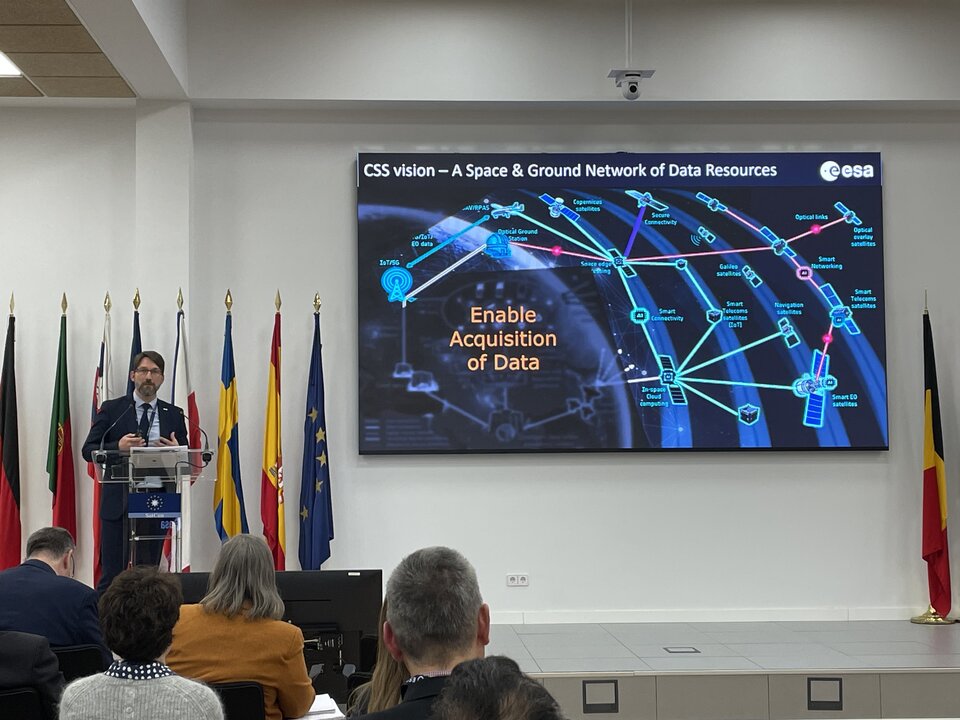Collaboration is key to providing security during crises
Representatives of the space industry came together with individuals from ESA member states, user communities and academia on 22-23 November to discuss how space data are being made more secure and accessible in response to an increasing number of crisis situations, such as climate-change related natural disasters.
Held at the European Satellite Centre in Madrid, Spain, the ‘Space Data Space’ workshop - led by ESA in partnership with the European Space Policy Institute - explored how partners can store and share space data. This is particularly valuable during times of crisis, especially when combined with airborne and ground-based data, or detailed information about critical infrastructure, for example.
ESA’s Pascal Legai, Senior Security Advisor to the Director General of ESA, opened the workshop by giving the floor to the Director of the European Satellite Centre, Ambassador Sorin Ducaru.
One of the keynote speakers, Alberto Palomo, Chief Data Officer of the Government of Spain, said: “Data per se is not valuable, it becomes so only if you transform it and make actual use of it.”

Giving another keynote presentation, Christopher Topping, ESA’s Civil Security from Space Programme Manager, said: “The access to information, swiftly, anywhere at any time is imperative in times of urgent action. We are all too familiar with the natural disasters, the geopolitical instabilities and the impact they have on people, state and critical assets. We need responsive availability to actionable information, we need it through the lifecycle of incidents, to reduce its impact by preventive measures, to reacting to unfolding events, and to the recovery phase.”

To help achieve this, ESA is developing the necessary solutions through the Civil Security from Space Programme, which will use space assets to help save lives and livelihoods.
One example is the recent partnership signed with ICEYE, a Finnish microsatellite manufacturer and data and solutions provider, which will improve early warning systems for floods and wildfires globally. ICEYE’s satellites use synthetic aperture radar technology to see through smoke and storm clouds, allowing emergency teams to assess the risks of fires and storm-related flooding by providing data in near-real time.
ESA is seeking to partner with many satellite providers. For example, Open Cosmos, a UK-based ESA Business Incubation Centre start-up company that provides the tools necessary for businesses, research institutions and other organisations to develop, launch and operate satellites. The collaboration aims to foster the sharing of satellites’ capabilities and data resources to better meet the urgent needs of civil security and crisis responders during disaster.
Collaborations such as these enhance the use and integration of space technologies to support a quick response to crises on Earth, contributing to the ESA Rapid and Resilient Crisis Response Accelerator.




